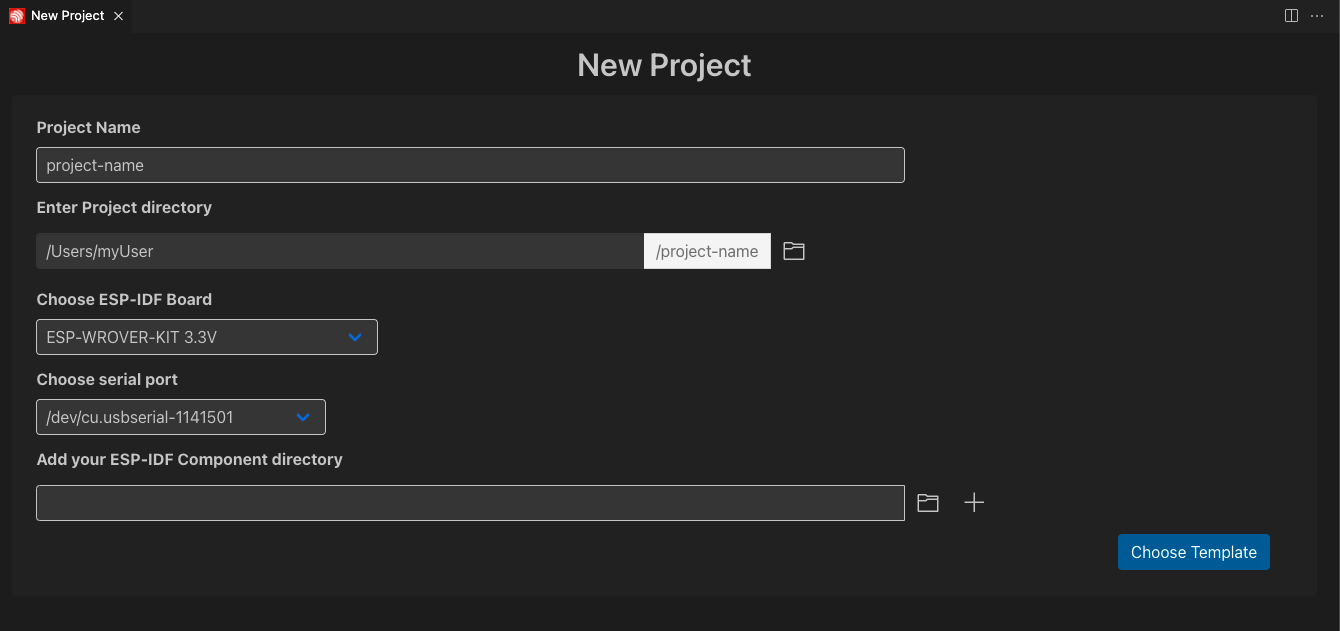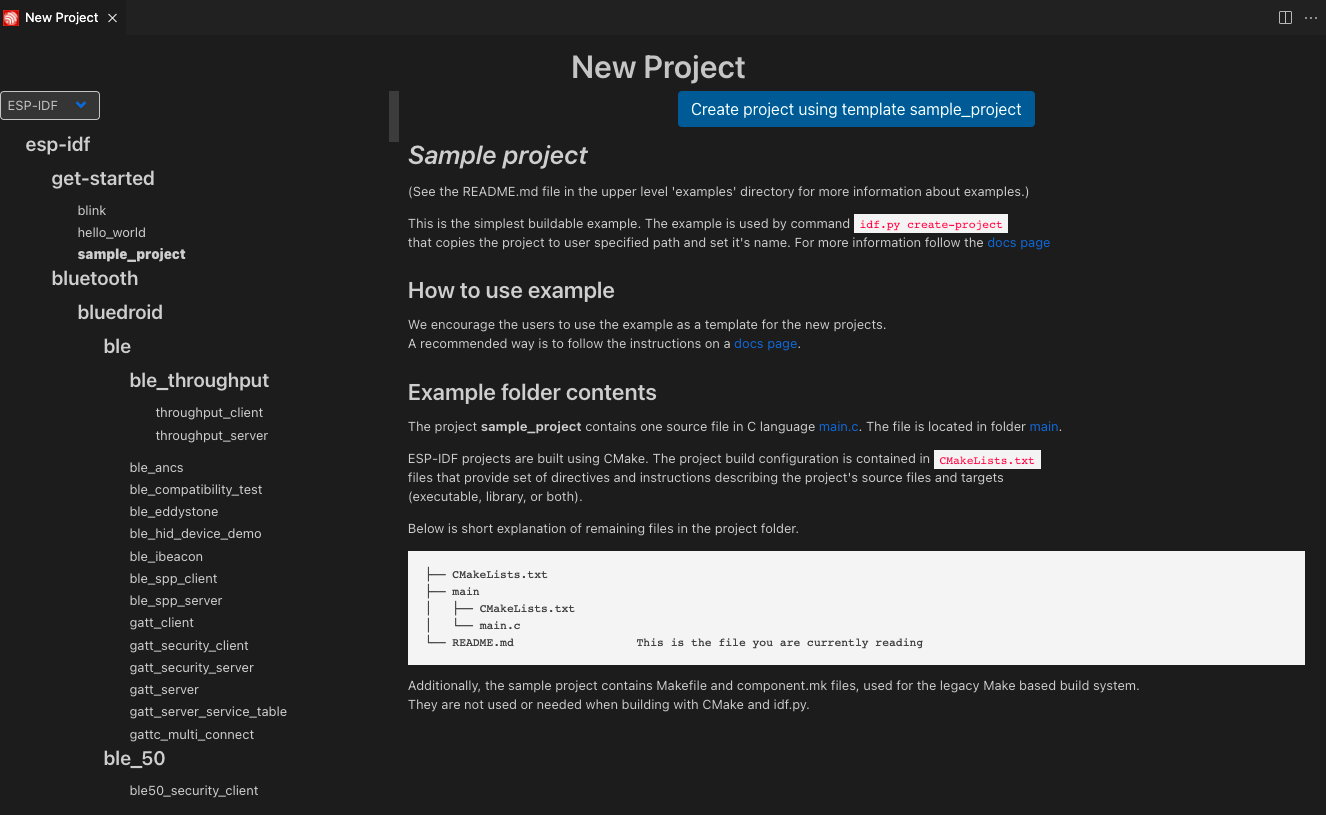Start a ESP-IDF Project
There are three ways one can get started with a project:
The first option is recommended as it allows you to configure the project while the second and third just create the project with current workspace folder configuration.
1. Using ESP-IDF: New project
In Visual Studio Code
Navigate to View > Command Palette.
Type ESP-IDF: New Project and select the command to launch the New Project wizard. This will open the New Project window as shown below:

Choose the project name
Choose where to create this new project
Select the Espressif board you are using
Select the serial port of the device (A list of currently serial devices is shown in the dropdown)
Note
Please review Establish serial communication if you are not sure about the serial port name.
Note
Please review Configuration of OpenOCD for Specific Target to understand which board or configuration to use for your specific hardware.
Optionally, You could also choose to import any ESP-IDF component directory
component-dirto the new project which will be copied to the new project’s directorycomponentssub directory (<project-dir>/components/component-dir)After that click
Choose Templatebutton.Choose ESP-IDF from the dropdown if you want to use an example as template.
Note
If you want to create a blank project, choose ESP-IDF sample_project or Extension template-app.

Choose your desired template and click the Create Project Using Template <template-name> button where <template-name> is the name of the selected template.
After the project is created, a notification window will show up to open the newly created project or not.

2. Using Show Examples Projects
In Visual Studio Code
Navigate to View > Command Palette.
Type ESP-IDF: Show Examples Projects and select the command to create a new project from ESP-IDF examples.
Select
ESP-IDFfrom the dropdown. A window will appear showing a list of ESP-IDF examples.When you select an example the readme will be shown and a Create project using example example_name button.
Choose a destination to create the new project. A notification will be shown to Open folder in a new window.

3. Opening an Existing ESP-IDF Project
ESP-IDF projects follow this directory structure:
- myProject/
- CMakeLists.txt
- sdkconfig
- components/ - component1/ - CMakeLists.txt
- Kconfig
- src1.c
- component2/ - CMakeLists.txt
- Kconfig
- src1.c
- include/ - component2.h
- main/ - CMakeLists.txt
- src1.c
- src2.c
- build/
In Visual Studio Code
Navigate to View > Command Palette.
Type ESP-IDF: Import ESP-IDF Project and select the command to import an existing ESP-IDF project.
This command will add both Visual Studio Code configuration files (settings.json, launch.json) and Docker container files (Dockerfile and .devcontainer.json).
Next step is to Connect a device.
Adding Visual Studio Code configuration files and Docker container
Open a directory in Visual Studio Code with menu File > Open Folder which contains a CMakeLists.txt file in the root directory (myProject) that follows the ESP-IDF structure.
You can add vscode configuration files (settings.json, launch.json) by:
Navigate to View > Command Palette.
Type ESP-IDF: Add .vscode Configuration Folder command.
If you want to open the project within the ESP-IDF Docker container:
Navigate to View > Command Palette.
Type ESP-IDF: Add Docker Container Configuration and select the command to add the
.devcontainerdirectory to your current directory.Navigate to View > Command Palette.
Type Remote - Containers: Open Folder in Remote Container and select the command to open the existing project into the recently created container from previous step Dockerfile.